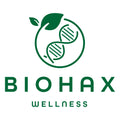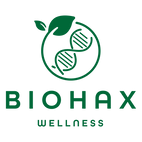Before collagen powders and overpriced elixirs took over your feed, there was stock. Simple, slow-cooked, mineral-rich stock—a humble pantry staple that’s been quietly rebuilding guts and calming inflammation for centuries.
At BioHax, we call it what it is: the original functional food. But let’s be clear—more isn’t always better. Yes, you can overdo it. And yes, there is a smart way to make and use it—especially if you're dealing with gut issues, candida overgrowth, or fatty liver.
What Bone Broth Actually Does in the Body
Bone broth isn’t just warm comfort—it’s liquid scaffolding. When made properly (think grass-fed bones, filtered water, no sketchy powders), it delivers:
-
Gelatin + collagen precursors to support gut lining, joint recovery, and skin resilience
-
Amino acids (glycine, proline, glutamine) to repair tissues and ease inflammation
-
Bioavailable minerals like calcium, magnesium, potassium, and phosphorus
-
Natural electrolytes to rehydrate and support adrenal function
It’s naturally low in sugar, carbs, and inflammatory triggers—making it ideal for gut dysfunction, sluggish livers, and candida overgrowth.
→ [Explore Candida and Liver Health]
Why Simmer Time Matters (Yes, Lead Is a Thing)
You’ve heard it before: simmer for 24+ hours to extract all the goodness. But here’s what most “wellness” blogs won’t tell you:
Longer simmer time = higher risk of lead leaching.
The sweet spot:
-
8–12 hours for chicken or small bones
-
12–16 hours for beef or marrow bones (max 18 hours)
-
Always use grass-fed, organic bones and filtered water
-
Add 1–2 tsp apple cider vinegar to draw out minerals safely
Why It’s a Candida Protocol Lifesaver
When you’re avoiding carbs, sugar, fermented foods, and joy—bone broth becomes your fallback. It feeds your gut lining, not your yeast.
Broth benefits during candida recovery:
-
Repairs tight junctions and seals a leaky gut
-
Fuels liver detox pathways under antifungal strain
-
Soothes inflamed GI tissue
-
Replenishes hydration and minerals during low-carb detox
-
Works beautifully with candida-safe greens like bok choy, silverbeet, zucchini, and celery
→ [Browse Candida-Friendly Recipes]
Bone Broth Done Right (The BioHax Way)
We don’t do powdered “broth” with additives. No cubes, no MSG, no foil packs.
Our broth non-negotiables:
-
Grass-fed bones (beef, lamb, chicken, or fish)
-
Filtered water only
-
Stainless steel or ceramic pots
-
Glass storage jars—no plastic
-
No boiling, ever. Just a low, gentle simmer.
Bone broth isn’t a wellness trend—it’s a tool. A reset button for your gut, liver, and nervous system when used with intention.
How Much Bone Broth Is Safe (And When to Have It)
It’s not about guzzling litres—it’s about using broth strategically:
| When | How Much | Why |
|---|---|---|
| Morning | 100–200 mL | Primes gut lining, supports liver drainage |
| Before bed | 100 mL | Glycine helps calm the nervous system |
| During cleanses | Up to 1 cups/day | Replenishes minerals, supports fasting |
| Kids/sensitive | 50–100 mL | Gentle digestive support |
What to Pair It With
To boost the anti-inflammatory and liver-supportive effects, pair your broth with:
-
→ Turmeric + Curcumin - shop here
Anti-inflammatory, synergistic with glycine, great for liver support -
→ Celtic Sea Salt - shop here
Replenishes electrolytes and enhances trace mineral absorption. -
→ Chopped Silverbeet, Zucchini and Bok Choy
Adds fibre and stimulates bile flow—without feeding candida -
→ BioHax Dandelion Root - shop here
Amplifies liver drainage, especially during antifungal phases
Keep it clean: always use filtered water, stainless steel or ceramic cookware, and glass storage jars. Skip the foil, aluminium, and “broth” cubes that spike histamine and destroy the point entirely.
Storage Tips to Keep It Safe
-
Cool quickly after cooking—don’t leave it out
-
Store in glass jars in the fridge (up to 5 days) or freezer (3 months)
-
Always reheat gently—don’t microwave in plastic
-
Discard if it smells sour, metallic, or ‘off’
Bottom Line
Bone broth is still one of the best gut tools you can make in your kitchen. But like everything in wellness, more is not more. Simmer smart, store clean, and pair with intention—and your gut will thank you.
→ [Explore Candida & Liver Health Blog]
→ [Shop Gut & Detox Essentials]
Original Article Date: 4 March 2019 - Editor
Updated Article: 29 July 2025 - Editor



